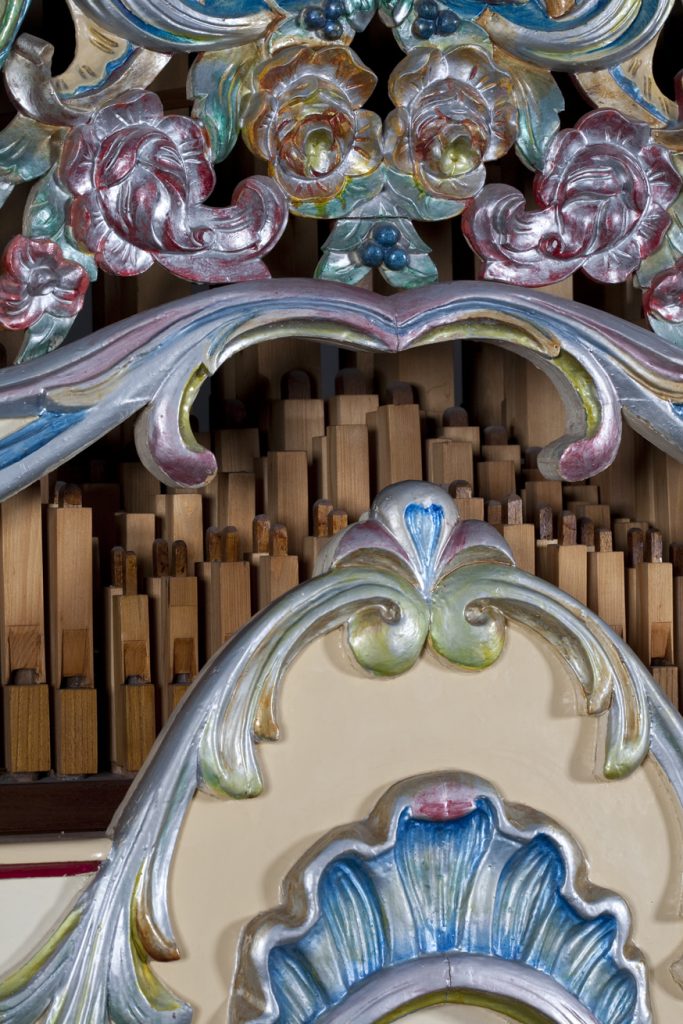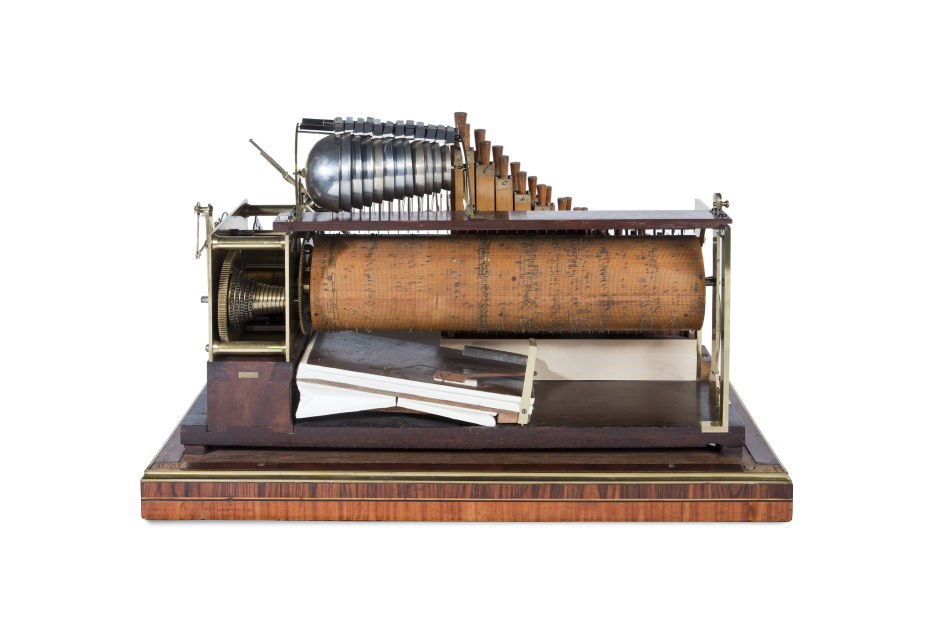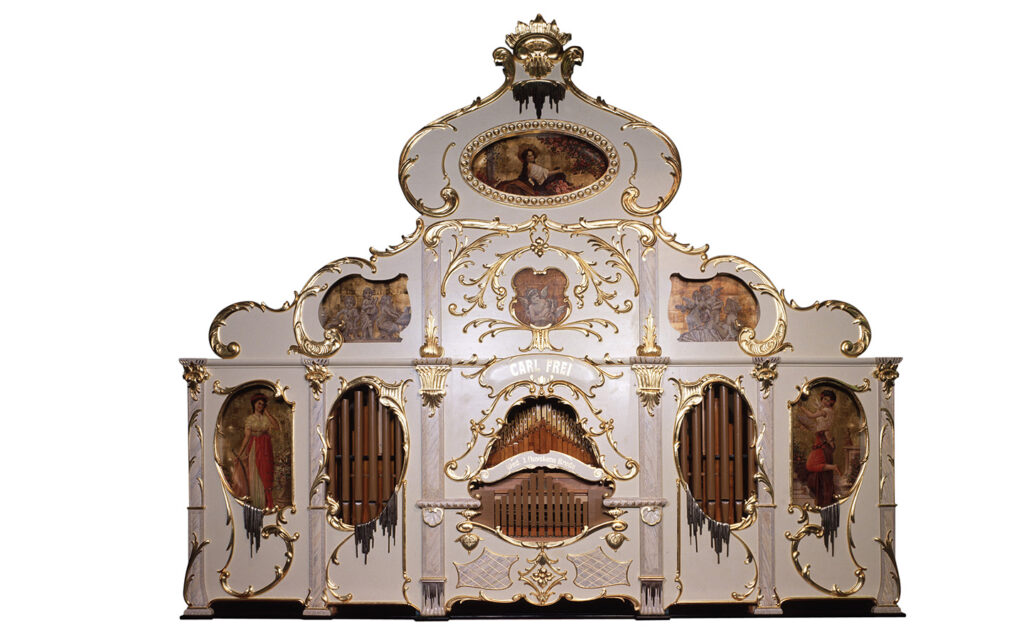Barrel organs
What immediately springs to mind when you hear the words 'barrel organs' are images of large, colourful instruments being played in the streets and at the fairground.


While those images are certainly correct, they say nothing about the smaller organs that were played at royal courts and in salons in the 16th century. The basic principle of the organs is the same: organ pipes supplied with wind from bellows at the right times with the help of a music programme. This requires a rotary motion which both pumps the air and sets the music programme in motion. This rotary motion can be created manually or by using weights, springs or electricity.

In the 15th, 16th and 17th centuries, automatic barrel organs were rare and expensive which meant that they were only accessible to royalty and other dignitaries. In the 18th and especially the 19th century, these instruments could also be found in the salons of aristocrats and the wealthier bourgeoisie. These were often organs combined with a clock, i.e. a musical clock with organ pipes.
The chamber barrel organ
Museum Speelklok’s oldest chamber barrel organ, intended for use in the home, is a hand-cranked cylinder organ from around 1760. It was made by the famous London organ builder and clockmaker George Pyke. The instrument is a gift from Arthur W.J.G. Ord-Hume, a friend of the museum and author of a number of books on self-playing musical instruments. The smallest, simplest living room barrel organ is the so-called ‘serinette’ or canary organ (from the French word ‘serin’ meaning canary). This little instrument, the size of a cigar box, was produced in the late 18th and early 19th century and was used to teach caged songbirds melodies.

Museum Speelklok also has larger chamber barrel organs by builders such as de Davrainville (Paris) and Diederich Nicolaus Winkel (Amsterdam). The collection includes beautiful organs by the latter nicknamed Lady, Douairière and Freule after their donors. A lot of automatic parlour organs were also built in England and often also functioned as church organs: they came with a repertoire of both psalms and secular music.
Street organs
Cylinder organs also came in larger sizes and were then wheeled around on carriages. One example is the Haagsman made by Gebrüder Bruder of Waldkirch (circa 1885). This is the last cylinder organ that was played professionally on the street in the Netherlands (until 1957!) by operator Haagsman.

Revolution in world of barrel organs
In 1892, Anselmo Gavioli was granted the patent for the barrel organ with book system. This system had been around for some time: the textile industry was using these zigzag-folded, perforated cardboard strips in the 18th century. Gavioli introduced the organ book as a replacement for the costly and heavy cylinders, revolutionising the world of barrel organs.
The 52-key Gasparini (Foucher-Gasparini, Paris, circa 1910) is one of the early book organs in the museum’s collection. At the time, the instrument was touted as the ‘Gasparini Orgue-Orchestre’ as it replicated a 20-piece orchestra. The Gasparini was one of the first book organs imported by barrel organ rental company Leon Warnies of Amsterdam. Leon Warnies had started his rental business in 1875, putting him at the forefront of Dutch barrel organ culture which reached its peak in the period 1920-1940.

Fairground organs
Barrel organs were also played at the fairground, first in the form of cylinder organs and later book organs. One example of the latter kind of fairground organ is the Double Ruth (A. Ruth & Sohn, Waldkrich, 1922). This organ gets its name from the fact that the size of the case had to be doubled when the instrument was expanded to its current size. This was necessary because the premise was that it had to be possible to play the demanding music of Richard Wagner optimally on this instrument! The Double Ruth was played from 1923 by fairground operator Jean Benner and later in the Hommerson brothers’ fairground rides.

Dance organs
Dance organs were extremely popular in Belgium in particular. These often gigantic organs with their domes and columns were often bombastic sights. They were the centrepiece of large dance halls where the public could request a waltz, foxtrot or tango for a fee. In these entertainment venues, it was not so much about volume but about the rhythm. Museum Speelklok has several dance organs, including the Huyskens dance organ which is the first organ that German-born Carl Frei built in the Netherlands (Breda, 1923). It was destined for the dance hall of the Huyskens family where it played until it fell into disrepair in the 1960s.
Some organs have had multiple functions over the years. Fairground organ The Schuyt was built in 1914 by Mortier as an 86-key dance organ. In 1929, it was turned into a 105-key fairground organ for the Hommerson brothers’ Wembley attraction by Carl Frei in Breda. The front was also replaced in the process. The Schuyt (named after Mr Schuyt who helped the museum fund the purchase) is now on its fourth front.

The sounds produced by a barrel organ
Barrel organs almost always have multiple stops: a series of organ pipes with the same timbre. These stops can be played together or separately to give the sound produced by the organ more depth. For example, there are stops that imitate existing instruments such as the violin. In most cases, the registration for early parlour organs is on the cylinder while the registration for the later street, dance and fairground organs is on the organ book or Midi. Organs equipped for Midi are told what to play by a computer programme. The Schuyt has stops that include the violin, cello, baritone horn, trumpet and flute. In addition to these stops, the larger organs often feature percussion. In the case of The Schuyt, this includes the bass and snare drum, cymbal, woodblock and triangle.
After World War II, the gramophone also took over entertainment venues, bringing the great popularity of dance organs to an end.